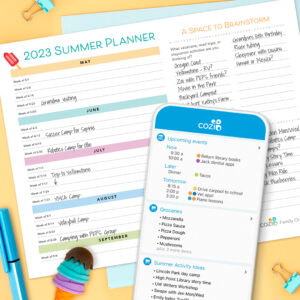As a housewife, one of the most challenging tasks you face is disciplining your children. It’s a delicate balance between setting boundaries and being loving and nurturing. Effective discipline techniques are crucial in teaching your kids important life skills, such as responsibility, respect, and self-control. In this article, we’ll explore some effective discipline techniques that you can use to raise well-behaved and well-adjusted children.
Understanding Discipline
Before we dive into the techniques, it’s essential to understand what discipline is and what it’s not. Discipline is not about punishing or scolding your child, but rather about teaching them right from wrong and helping them develop self-regulation skills. Discipline is about setting clear boundaries, being consistent, and providing positive reinforcement.
1. Positive Reinforcement
Positive reinforcement is a powerful discipline technique that focuses on rewarding good behavior rather than punishing bad behavior. When your child exhibits good behavior, such as sharing or using good manners, acknowledge and reward them with praise, stickers, or small treats. This encourages your child to repeat the good behavior.
2. Natural Consequences
Natural consequences are a great way to teach your child responsibility and accountability. When your child makes a mistake, such as spilling a glass of milk, let them clean it up. This teaches them that their actions have consequences and helps them develop problem-solving skills.
3. Time-Outs
Time-outs are a classic discipline technique that can be effective when used correctly. When your child misbehaves, remove them from the situation and give them a brief time-out. This helps them calm down and reflect on their behavior. However, be sure to set a timer and limit the time-out to avoid punishment.
4. Redirection
Redirection is a technique that involves redirecting your child’s attention to a more positive activity. When your child starts to misbehave, redirect them to a different activity or toy. This helps them learn to regulate their emotions and behaviors.
5. Active Listening
Active listening is a powerful discipline technique that involves listening to your child without interrupting or judging. When your child talks, maintain eye contact, nod, and ask open-ended questions to encourage them to express themselves. This helps your child feel heard and understood, reducing the likelihood of misbehavior.
6. Setting Clear Expectations
Setting clear expectations is crucial in discipline. Make sure your child understands what is expected of them and what the consequences will be if they don’t meet those expectations. Be specific, consistent, and fair when setting expectations.
7. Apologizing and Forgiving
Apologizing and forgiving is an essential discipline technique that helps your child develop empathy and understanding. When your child apologizes for their mistake, acknowledge and accept their apology. This helps them develop a sense of responsibility and accountability.
8. Modeling Good Behavior
As a housewife, you’re your child’s most significant role model. Children learn by observing, so it’s essential to model the behavior you want your child to exhibit. Demonstrate respect, kindness, and self-control, and your child will be more likely to do the same.
9. Consistency
Consistency is key in discipline. Establish clear rules and consequences, and enforce them consistently. This helps your child develop a sense of predictability and stability.
10. Showing Love and Affection
Finally, don’t forget to show your child love and affection. Discipline is not about punishing your child, but about teaching them important life skills. Make sure to show your child love, hugs, and kisses, even when they misbehave. This helps them feel loved and valued, reducing the likelihood of misbehavior.
Conclusion
Disciplining your child is a challenging task, but with the right techniques, you can raise well-behaved and well-adjusted children. Remember to focus on positive reinforcement, setting clear expectations, and modeling good behavior. By using these effective discipline techniques, you’ll help your child develop important life skills and build a strong, loving relationship with them.












